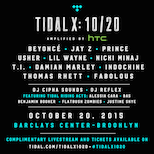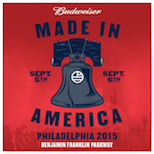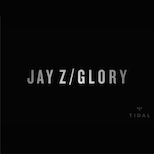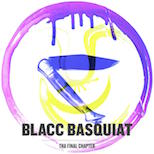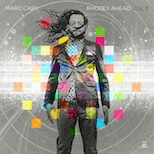Salaam Remi Talks “In The Chamber” Series, Working With Nas And Lauryn Hill, & The Presence of Amy Winehouse
10.21.2013
MUSIC

A few weeks back, super producer Salaam Remi released his first real project of his own called One: In The Chamber. The work took Remi’s love of sonic variety, carefully woven with vocals from the likes of Ne-Yo, Estelle, and others. It was a break from the norm for Salaam, who recently took the seat of Executive Vice President of A&R/Production at Sony. He’s known for creating music that specifically speaks to the artists he’s working with. The In The Chamber series is him, no compromise, and while there will be many more Chambers to come, he’s enjoying this one right now. While he divides his time between Miami-New York-Los Angeles-London, he checks in with Life+Times to recall his first creative encounter with Nas, the lack of Amy Winehouse on this project, how he may be collaborating with new label mate Lauryn Hill, and why you’ll never catch him in the club popping bottles.
Life+Times: Hey Salaam, how’s it going?
Salaam Remi: It’s going great. How are you doing today?
L+T: Pretty good! So One: In The Chamber is out. It dropped a few weeks ago, right?
SR: On September 30th, digitally, yes.
L+T: What brought on releasing this project? It feels like it’s obviously going to be one of many.
SR: Yes, it is number one of many many. I mean, basically I think that overall, it was me sitting back looking at the body of work and amount of records I have that people have never heard before, and also my experimentation over the last several years with orchestras and dealing with different types of sounds. It was something that was just really musical, that didn’t necessarily fit in the normal, pop-culture/media, radio play typical type of space, but something that, just for me, this is what I listen to. This is how I live, this is part of my musical palate, so I just wanted to put together a collection of things that kind of spoke more to where I was coming from and what I listen to and what inspires me. And then also hoping that in sharing that, it opened up a door for other people who just felt the same way, that it’s just music. Right now, the way people listen to music, they’ll have an eclectic mix of things within their phones that they’re listening to that doesn’t necessarily come from one area, and my creative space has just been the same way for a really long time. So this is just one area of music that I’m really feeling good about, and also things that you don’t really hear normally right now. There’s songs with great instrumentals, song with artists that I easily collaborated with that we had a good chemistry, and just making it come to life.
L+T: Is your palate so different from what it is that artists kind of want when creating the Salaam Remi sound on their projects?
SR: Yeah, I mean for me, it’s like, I’ve tried not to have a sound. Obviously there’s something there that’s rooted in hip-hop, blues, reggae, jazz, different things. But just in general, for me, I’ve always kind of worked around whatever the artist’s story was, and then created sounds to it. So with all of those stories, there was always, “Okay, I have to fit into Ne-Yo’s album. I have to fit into Akon’s album. I need to fit into Corinne Bailey Rae’s record or whatever they’re on at the moment.” This time it was just me being able to look back and say, “Okay, well this is just how I feel today. This is my Sunday afternoon chilling in the crib!” What might I hear? I might hear a little bit of action, I hear some jazz, I hear some Michael [Jackson], I hear some whatever it was, and I just went to it. But once again, these things came up over these periods of time of me continuing to create, and this is the first playlist. It’s basically just a page out of my booklet, because still within that, there isn’t any hard hip-hop, which I do. There isn’t any real reggae that I do. There still isn’t so many other things. I just felt like in general, with my experimentations with orchestras over the last seven years, since the Jazmine Sullivan “Lions & Tigers,” “Bust Your Windows” time, since I did stuff like that on Nas’ album, which was off a previous instrumentals album I did called Prognosis, as was the Jasmine Sullivan stuff… It was just like, “You know what? Here’s a great body of work,” and really what I want to do is just curate a crowd of people who want to hear music, not necessarily have something sold to them. It’s just music, and if you can sit down and hear it and it inspires you, then great! This is all I want to do.
L+T: I must admit, I was a little surprised there was no Amy Winheouse track on there. Are you reserving that for a later album or are you kind of tapped out of the Amy releases?
SR: Amy didn’t have many things recorded outside of what we put on the Lioness album, so if there is anything, there’s minimal stuff. But in general, there wasn’t any songs from most of the artists I normally collaborate with, like Nas or Jasmine Sullivan or Miguel or even my newer artist, Mack Wilds. I didn’t have any of my normal things, because this is something that’s kind of off the beaten path as far as me not disturbing anyone else’s marketing plan and what they have going on now. It’s like, you know what? This is a collection of songs that’s how I felt. So like I said, this is just leaving me room to easily come back with a lay-up of 15 more songs from…it could be anyone. I’m just really in a musical space and enjoying that.
L+T: What was it about Mack Wilds that made you want to sign him?
SR: I just like really cool people, and it wasn’t like a thing where I planned on working with him at first. I just met him, and I was a fan of his acting and then as we were sitting down, we were just always talking about particular things, and one of them was New York and the type of music we make in New York. Then as I watched him actually develop his singing ability and then his artistry all together and watching things he was doing, now that I’m an exec at Sony and I have my own label, it was just an easy alley-oop. Like, “Alright, what we were talking about? Let’s just do it!” So we were able to put it together in pretty much a month of the idea that we had and to put out an album that I really feel is timeless in its own right, but it’s also unprecedented at this time and period in music, where everything is kind of sounding and going in one direction. I love living against the grain, so we went against the grain.
L+T: Yeah, definitely. The singles have been really good, and I was so surprised at how well he could sing.
SR: Oh yeah, he totally could sing. He could sing better than you’ve heard, and he can play instruments and he can do all types of stuff. So, once again, with artists, I always look at artists not even for what they are now, but for their potential and how much they’re willing to work and how much they’re willing to grow. So you know, this is album number one for him, which we did this year, but this is going to continue to build and build because I see him in the next 5 to 10 years being his own creative force. Just the same way I saw that with a Miguel or an Amy or a Jazmine Sullivan or The Fugees, I see someone’s potential and then I help them realize that, and then I hope that they continue to create on their own.
L+T: How did you do that with an artist like Nas? You brought Nas in so many different directions too, but he had already been in the heart of his career.
SR: With Nas, I did…what was I doing? I was at the studio in L.A. and Nas was at that studio too, and it was kind of like his time where he was writing Stillmatic during 2001. So I just bumped into him in L.A. and he asked me for some music, and I think we exchanged two-way numbers at the time. Then he asked me to send music, and then I sent him the track that became “What Goes Around” on Stillmatic. But most of all, I think it was just with Nas and myself, he was able to ask me to come up with particular ideas and things that he had in his head, and then I would actually be able to do it. Whether it was musical, whether it was hip-hop wise, whatever it was, most of our stuff was born out of conversation, so I was just able to translate for him what he had that was in his mind. And you know, Nas can be his own worst critic, so sometimes he’ll go over his stuff rather than keeping it. So with me and Nas, it was just a collaboration where we have chemistry. Also, that’s what I’m really looking for! When I have chemistry with an artist, there’s no conversation involved, it just comes out, and then it keeps going where it has to go.
L+T: Do you think that you would work with Lauryn Hill again, now that she’s planning an album and it’s on your label?
SR: Probably, it will be on Sony. I mean, she’s doing her thing, but I probably…not as a producer. I speak to her. So we converse but you know, she’s…at this point, more than capable of producing her own records as she’s done for many years. So not as a producer, but I’m not actually really focused on my production angle at this point. It’s really about how can I help facilitate talent. It’s not about the talent I have, it’s about the talent I can recognize and help the world to see that, so that’s what my space is with her project and everything that I’m working at Sony.
L+T: She’s back in a creative space now?
SR: From what I know, yeah. She’s actually doing that, releasing music, so time will tell. Just keep your eyes open, before you know it!
L+T: So how are you planning for number 2, Two: In The Chamber?
SR: You know what? God’s planning it, I’m just showing up and making sure it comes out. It’s already happening without even thinking about it. With so much of the music, like I said, it wasn’t stuff I really thought about, it’s just how it came out. It just goes. I’m happy to have this as my first body of work that I’m putting out with my name on it, because it really represents who I am: a musical body, more than everything else that could be in pop culture. So I’m just like, great, this is my lane! Music! You know, “What does Salaam do?” Music, more music! “Great, let’s talk about that all day. And matter of fact, let’s not even talk about it, let’s just listen to it.”
L+T: You’re never the type of producer that likes to be out in the forefront, poppin’ bottles and getting into trouble. How do you maintain that level of musical integrity and the low-profile that you’ve managed to have for so long, and still getting executive jobs at Sony?
SR: I don’t drink, so I don’t pop bottles, and then I stay out of trouble! Don’t start nothing, won’t be nothing. You can’t find me! If you could find me, then maybe you could actually attach trouble to me, but I’m a bit of a phantom in that way. Most of the times if anybody does see me, I’m somewhere doing something productive so, in that way, there’s more great things to catch up with me than anything else. There’s a certain lifestyle of people who create and that are artists, and that’s just where I am. I’m an introverted artist who likes to show up when there’s music, and show up with the music. My goal is to make things that last way beyond my existence, and all these different things are things that happen and come out and do well, without me even being around.
L+T: You were living in Miami, right? Have you relocated back to New York now with the Sony position?
SR: I still live in Miami, but I work in New York and I work in L.A. and I work in London a bit, so I’m there a lot, but I still live in Miami.
L+T: Oh wow, so you’re commuting a whole lot.
SR: Yeah, I stay on a plane.
L+T: That’s crazy!
SR: It’s not as bad as touring. Touring is like, you didn’t stay for a day, you don’t live anywhere, you wash on a bus. I can’t really do that, that’s not my thing. But I definitely, I get up and go. If there’s something else to do, somewhere else tomorrow, I’m on a plane. Bye bye!
L+T: Wow. What do you think of London?
SR: London’s been another creative hub for me, so I have a lot of energy there, just because I’ve worked there over the last 15 years a lot. So, it’s just another space for me, and I have a couple of artists that are based in London as well.
L+T: Do you still feel Amy when you get there?
SR: I feel Amy wherever I’m at. That’s kind of like part of who I am and who I’ve been. So, not necessarily there, but really just in general.
